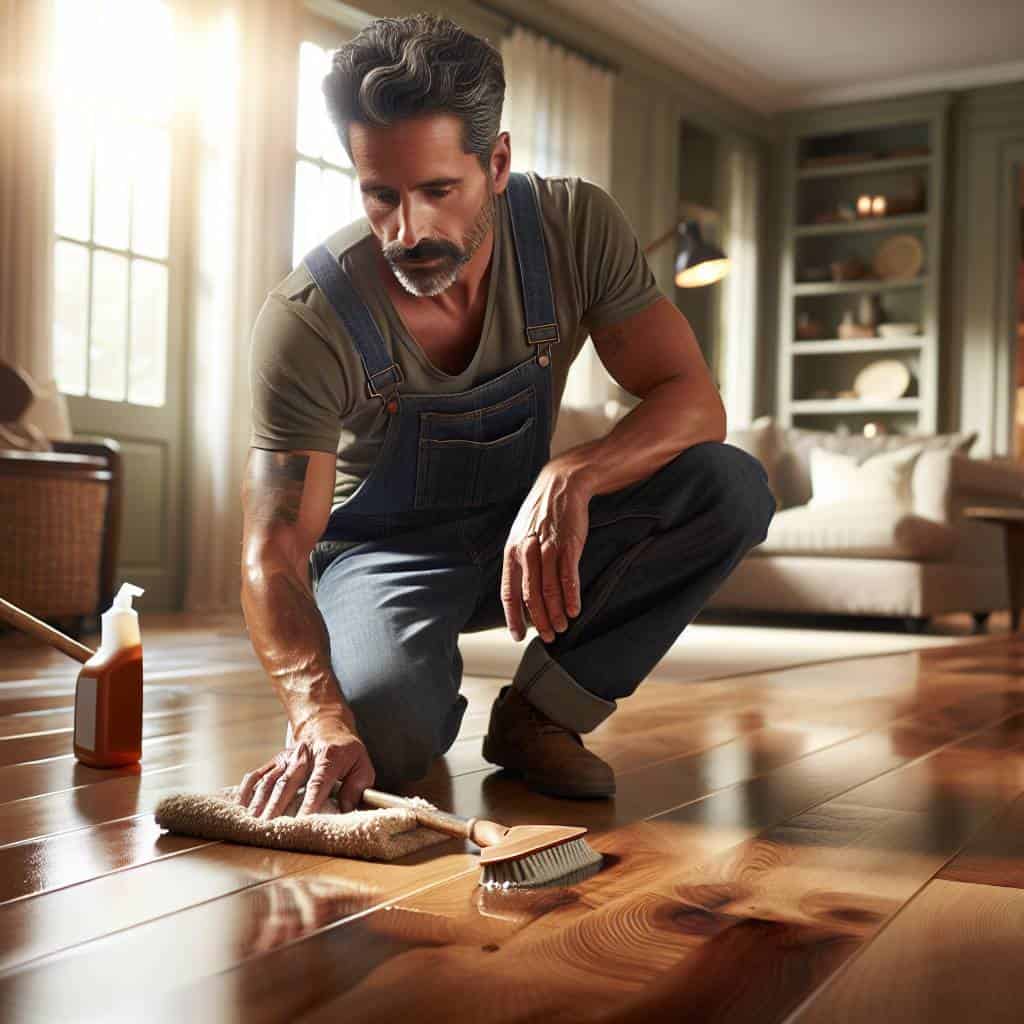You know, there’s a special kind of irony in a mechanic like me spending weekends on my knees, wrestling with the stubborn life force of hardwood floors. My hands, usually at home under the hood of a car, covered in engine grease, now grapple with a mop and a bottle of polish. The floors in my house mock me, creaking underfoot as if to remind me of every misstep and every scuff I failed to prevent. They’re like unruly children, demanding constant attention and laughing at my futile attempts to keep them pristine. It’s almost poetic, the way they reflect every bump and grind of daily life, refusing to let you forget the trail you’ve left behind.

Now, if you’re here looking for a magic solution, let me pop that bubble right away. But don’t close this tab just yet—I promise there’s a method to this madness. We’ll dive into the gritty reality of cleaning, the art of scratch repair, and the never-ending cycle of polishing. It’s not glamorous, but hey, neither is changing the oil in your car. By the end, you’ll have a toolbox full of real-world strategies to keep those floors looking less like a battlefield and more like the polished wood they were meant to be. So, roll up your sleeves, and let’s get to work.
Table of Contents
The Art of Not Losing Your Mind Over Wood Scratches
Let’s face it: wood scratches are like the unexpected potholes on the smooth highway of maintaining hardwood floors. Just when you think you’ve got everything buffed and shiny, one little drag of a chair leg can send you into a tailspin. But here’s the deal—those scratches? They’re just life’s little way of keeping us humble. Think of them as the wrinkles on a well-traveled storyteller’s face, each one a badge of honor in the saga of your floor’s life. Sure, a deep gouge can feel like a punch to the gut, but a light scratch? That’s just a whisper in the wood grain, a subtle reminder that your floor is lived-in, not locked away in a display case.
Now, before you reach for the sandpaper or start hyperventilating over a tiny mark, let’s pop the hood on this problem. The art isn’t in erasing every blemish—it’s in knowing which ones to tend like a mechanic coaxing life back into an old engine. For those minor scratches, sometimes all you need is a touch-up marker or even a bit of the old walnut trick. Rub a walnut over the scratch, watch the oils work their magic, and see if that doesn’t smooth things over. But remember, perfection is a myth. Floors, like engines, need regular maintenance—cleaning, polishing, and sometimes just a bit of understanding that not every scratch is a fail. It’s all about keeping that engine—er, floor—running smoothly, one little fix at a time.
The Dance of Wood and Care
Maintaining hardwood floors is not just a task, it’s a relationship. Each scratch a story, each polish a promise to keep the beauty alive.
The Floor’s Whispered Lessons
In the end, maintaining hardwood floors isn’t just a chore; it’s like tuning into a whisper from the past, each scratch and scuff telling tales of footsteps that have crossed it. It’s a journey through time, a slow dance with life’s imperfections. My hands have grown calloused from this ritual, but my mind has been sharpened, honed like a well-oiled machine. Every time I kneel down to repair a scratch or polish a dull spot, I’m reminded that true care isn’t just in the act, but in the mindfulness it brings. It’s not about the floors looking like they did on day one—it’s about embracing the stories they’ve gathered.
And that’s the truth of it, isn’t it? A life well-lived is a bit like those floors—scratched, repaired, polished, and richer for it. As I work, I realize that perfection is overrated. It’s the character in the wood, those unique marks of existence, that make it beautiful. So, the next time you’re down on your hands and knees, remember: you’re not just cleaning a floor; you’re nurturing a narrative. And maybe, just maybe, that’s where the real beauty lies.